We conduct experiments at every scale ranging from the nanometer to the meter.
Macroscale: Through the Fluid Dynamics Testing Facilities (FDTF), we have access to two low-speed wind tunnels and a water flume. The smaller wind tunnel has a 0.6 x 0.6 x 3 meter test section and can operate at speeds up to 50 m/s. The larger tunnel is a brand-new $1.4 Million facility with a 1.2 x 1.2 x 4 meter test section, capable of operating at speeds up to 50m/s, and configured for both engineering and animal flight testing (BioSafety Level 2).
The water flume has a 0.6 x 0.8 x 5 meter test section and can operated at speeds up to 1 m/s. It is also available for testing both engineering models and animal subjects.
Microscale: Our facilities included two inverted microscopes for microfluidic and bacterial motility experiments. One of these is configured as a real-time tracking microscope, capable of keeping a motile cell in the field of view by translating the stage and objective in real time. The microscope systems are equipped with multiple color LED illumination sources and an Argon Ion CW laser used that can be used in both flood and TIRF illumination modes.
Measurement systems: We have expertise in optical measurement techniques including multiple camera kinematic measurements and PIV (2D, Stereo, Tomographic and Shake-the-Box) with lasers that operate at speeds unto 10 kHZ repetition rate and with energy levels up to 200 mJ/pulse. We have access to up to 10 high speed cameras (Photron and Phantom) for PIV and kinematic measurements as well as sCMOS cameras for high resolution (4MP) image acquisition. We also have expertise in hot wire anemometry and in using cyber-physical systems to create computer-controlled elastic mounts for test hardware so that custom aeroelastic fluid-structure interactions can be studied.
Animal Care: Brown University maintains an AALAC-accredited animal care facility in which maintain colonies of several species of bats. In the lab, we have complete facilities to culture different strains of bacteria for our cell motility studies.
Support systems: In addition to a professional machine shop and brand new state-of-the-art cleanroom electron microscope and micro fabrication facilities, we have use of the Brown Design Workshop, a hands-on makerspace equipped with 3D printers, laser cutters, CNC metal and foam cutting, woodworking and electronics facilities. A complete suite of software is available to support our research, including MATLAB, LabView, Solidworks, Fusion360, COMSOL, Adobe Creative Cloud, etc.
